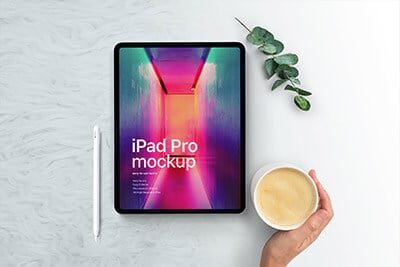Wireframe vs Mockup: What’s the Difference? (And When to Use Each)
In the dynamic world of web and app design, understanding the tools and processes is crucial for creating effective designs. Among these, wireframes and mockups are fundamental elements, but they are often confused or used interchangeably.
This guide aims to demystify these concepts, highlighting their distinct roles in the design process. We also explore the differences between wireframes and mockups, their unique roles, and offer practical advice on when and how to use each effectively in your design projects.
Let’s get started.
2 Million+ Product Mockups, Templates & More With Unlimited Downloads
Download thousands of beautiful product mockups (for both physical products and devices), to showcase your digital or physical design with an Envato Elements membership. It starts at $16 per month, and gives you unlimited access to a growing library of over 2,000,000 mockups, design assets, graphics, themes, photos, and more.
What is a Wireframe?
Wireframes are the skeletal framework of your digital project, be it a website, app, or software interface. They are primarily low-fidelity, black and white layouts that outline the size and placement of page elements, features, and navigation for your project.
Wireframes are devoid of color, font choices, logos, or any real design elements. Their primary focus is on functionality, behavior, and the priority of content. They act as the foundation upon which your project is built, facilitating collaboration, quick iterations, and decision-making at the initial stages of the design process.
What is a Mockup?
Mockups are the next step in the design process, where the wireframe evolves into a high-fidelity, static design model. They provide a visual representation of the product, incorporating design elements like colors, typography, images, and overall style.
While wireframes are concerned with structure and functionality, mockups bring the aesthetic aspect to the forefront, offering a close representation of the final product. They are instrumental in finalizing the visual design and are typically used in presentations to stakeholders and clients.
Wireframes vs Mockups – What’s the Difference?
The distinction between wireframes and mockups lies in their fidelity and purpose. Wireframes are about the ‘bones’ of the project—its structural layout—while mockups are about the ‘skin’—the visual style.
Wireframes are quick to produce and easy to alter, making them ideal for exploring different ideas. Mockups, on the other hand, are more detailed and time-consuming, used for finalizing the design vision and seeking client approval.
When to Use Wireframes?
Wireframes are most beneficial in the early stages of the design process. They are ideal for brainstorming, exploring different design approaches, and deciding on the functionality and content layout. The simplicity of wireframes allows designers and stakeholders to focus on usability and user experience without getting distracted by design details.
You can explore our collection of wireframe templates to see examples.
When Should You Use Mockups?
Once the wireframe is approved, mockups come into play. They are crucial when you need to present your design idea to clients or stakeholders, as they offer a realistic preview of the final product. Mockups help in finalizing the visual design, ensuring that all elements are in harmony and the user interface is appealing.
Check out our collection of app mockup templates for examples.
Tips and Best Practices for Using Wireframes
1. Prioritize Clarity and Simplicity
Keep wireframes simple and focused on layout and functionality. Avoid adding design elements like colors or fonts. The goal is to make the content and structure as clear as possible to facilitate easy changes and discussions.
2. Facilitate Collaborative Feedback
Use wireframes as a tool to encourage feedback and collaboration among team members, stakeholders, and clients. This collaborative approach helps in refining the project’s requirements and functionalities at an early stage.
3. Emphasize User Experience (UX)
Design your wireframe with the user in mind. Ensure that the user journey is logical, intuitive, and aligned with the project’s objectives. Consider how users will interact with the interface and navigate through content.
4. Use the Right Tools
Choose wireframing tools that suit your project’s needs and your team’s workflow. Whether it’s a simple pen and paper or sophisticated digital tools, the right medium can streamline the wireframing process.
5. Iterate Quickly and Efficiently
Leverage the simplicity of wireframes to explore different ideas and layouts quickly. Don’t hesitate to make changes as new information or feedback comes in. This flexibility is key to refining the project’s direction.
Tips and Best Practices for Using Mockups
1. Incorporate Realistic Design Elements
Use actual images, colors, and typography to give a realistic view of the final product. This detail-oriented approach helps clients and stakeholders visualize the end result more accurately.
2. Maintain Consistency Across Designs
Ensure consistency in design elements across different pages or screens. Consistent use of colors, fonts, and styles is crucial for a cohesive user experience and brand identity.
3. Focus on Alignment and Spacing
Pay close attention to alignment, spacing, and layout. Proper alignment and consistent spacing can significantly enhance the visual appeal and readability of your design.
4. Use Mockups for Detailed Feedback and Testing
Present mockups to clients or stakeholders to get detailed feedback. Mockups can also be used for user testing to gauge the effectiveness of the design before moving into development.
5. Keep the End-User in Mind
While designing the mockup, always keep the end-user’s needs and preferences in mind. The design should not only be aesthetically pleasing but also functional and easy to navigate for the target audience.
Conclusion
In summary, wireframes and mockups are both crucial tools in the design process, but they serve different purposes. Wireframes are about structuring the content and functionality of your project, while mockups are about refining the visual aspect of that structure.
Understanding when and how to use each can greatly enhance the efficiency and effectiveness of your design process, leading to more refined, user-centered digital products.







